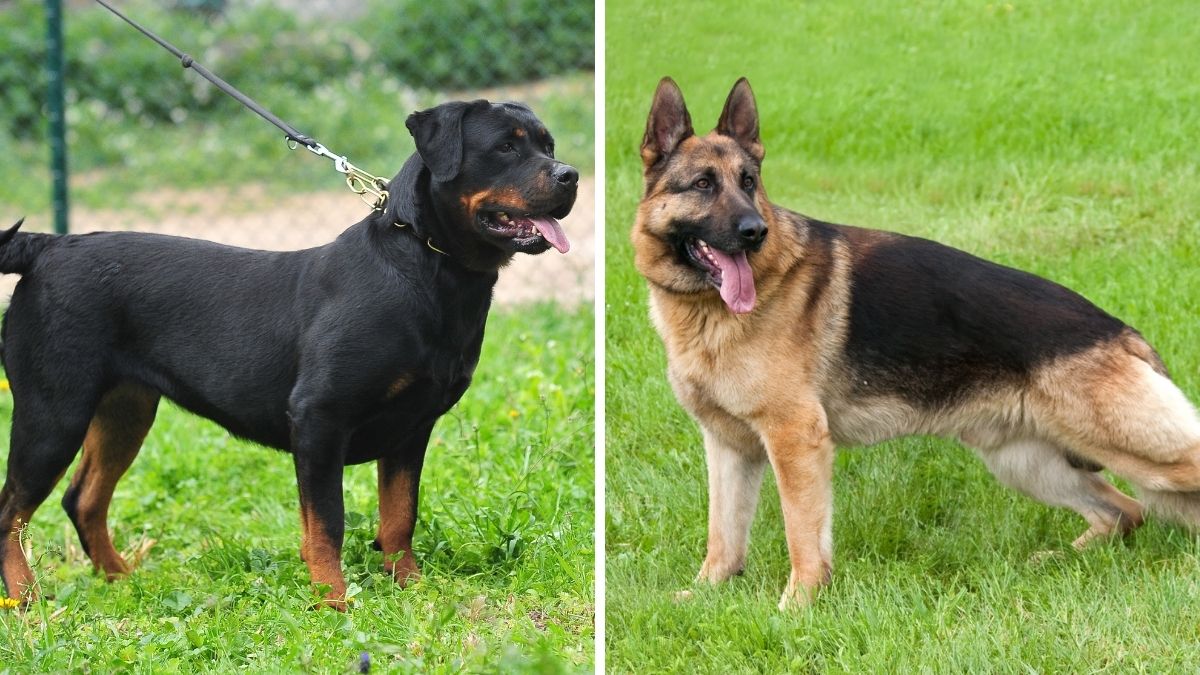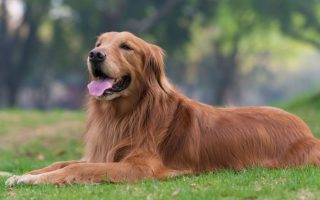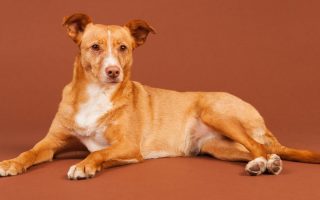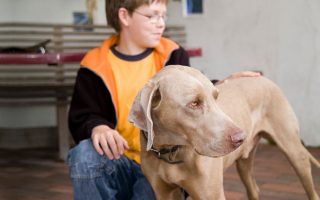The Rottweiler and the German Shepherd are on the same canine path in many ways, but their differences stand out as well.
As two popular dogs, you might find yourself weighing your options between these two. If that’s the case, you’re in the right place.
This article will draw in detail a comparison between these two strong and able dogs.
Both can make a good addition to your family, but you need to know what you might be getting into before making that choice.
Rottweiler vs German Shepherd Comparison
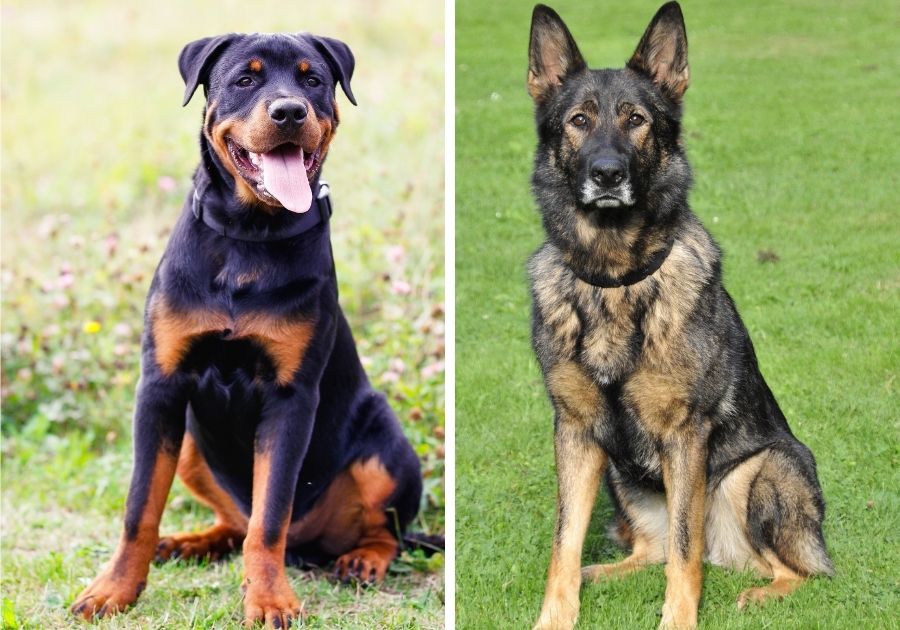
| Facts | Rottweiler | German Shepherd |
|---|---|---|
| Height | 22 to 27 inches | 22 to 26 inches |
| Weight | 85 to 130 pounds | 75 to 95 pounds |
| Coat Type | Double, straight, coarse | Double, straight, wiry |
| Coat Colors | Black | Black and red, black and cream, black |
| Temperament | Loyal, loving, confident | Smart, courageous, confident |
| Trainability | Yes | Yes |
| Life Expectancy | 9 to 10 years | 12 to 14 years |
| Energy | Average | High |
| Puppy Price | $1,500 to $2,500 | $1,500 to $3,000 |
Rottweiler Dog Breed – All You Should Know
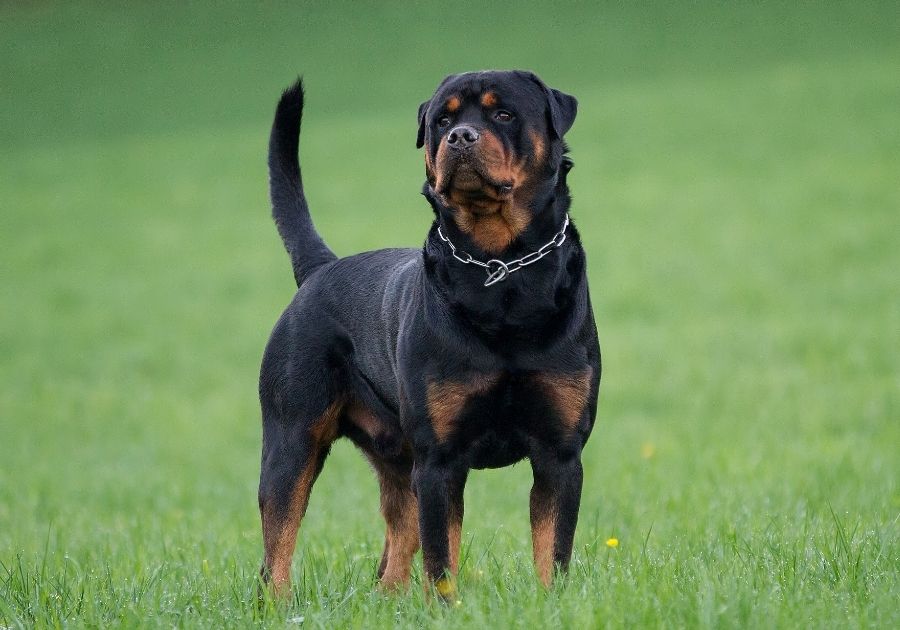
Rottweiler History
The Rottweiler is a native of Germany, but its ancestors came from Rome.
The Molossus was the name of Rottweiler’s ancestors, and they were used by these Romans to drive cattle.
When the Romans got into Europe and reigned in many areas, they brought the Molossus with them.
When they left, the offspring of the Molossus at Rottweil became what we know as Rottweiler.
This breed soon got a job in Germany as cattle dogs and guards. Their strength came in handy in pulling a cart, and after a day’s sales, the cattlemen will tie their purse with the money on the Rottweiler.
Who would want to steal money off a huge, black dog?
As Germany advanced in the use of technology, rail transport replaced cattle. With no more use for it, the Rottweiler faced extinction.
Fortunately, that changed in 1901 after the Rottweiler and Leonberger Club was formed. The breed also found a new job as a police dog.
Rottweiler got into the United States in the late 1920s, and it first got registered in the American Kennel Club in 1931.
Its popularity kicked off after the 2nd World War, and now the Rottie remains an easily recognized dog breed.
Rottweiler Appearance
The Rottweiler is huge, piling up on both pounds and height. The male Rottie is bigger than the female, and the difference is significant.
While a male Rottweiler weighs between 95 and 130 pounds, the female Rottie falls short at 85 to 115 pounds. The male Rottie is also two inches taller.
Rottie has a double coat, but shorter than what you’d find on herder and sled dogs. It is straight and coarse to the touch, always black. Sometimes it has a combination of tan too.
The black color and size are enough to make the Rottie seem intimidating, but those aren’t the only striking traits of this breed.
It has a stocky head, strong muzzles, and a muscular frame.
Its drooly nature should give it a nicer edge, but a lot of people fear—more than they admire—the Rottie. Of course, as a guard dog, that isn’t a bad thing.
Rottweiler Personality
Rottie is the canine example of a calm and confident bouncer. Except it isn’t protecting a club. Rather, it is standing guard in many American houses today.
The Rottie should not be shy but is usually aloof towards strangers. Your visitor won’t get an enthusiastic welcome from this breed.
With its family, this breed proves to have a soft side. They love being around their loved ones, but not in a way that makes it overly clinging.
It stands more like a bodyguard than a chummy friend. People often consider the Rottweiler to be aggressive, and statistics seem to confirm them among the most dangerous dog breeds.
However, this only happens because many Rotties are badly bred or poorly trained.
The Rottweiler is not expected to be aggressive, though its protectiveness can appear that way. In the right hands, this breed proves to be an asset.
There is some noticeable difference between the temperament of both genders.
The Male Rottie is calm, very observant, and serious. It is harder to control compared to the female, which tends to be more affectionate.
German Shepherd Dog Breed – All You Should Kow
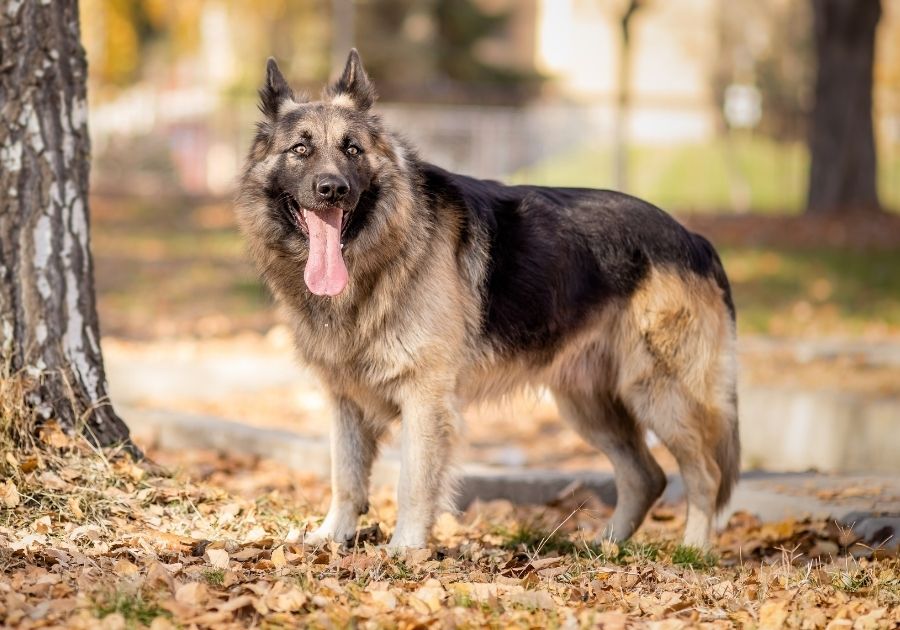
German Shepherd History
The German Shepherd dog is a native of Germany, as the name implies.
Developed in the 19th century, it was borne out of the work of an ex-military captain named Max von Stephanitz.
The latter wanted to develop a herding breed with superior ability, and he set to work doing that.
He developed the German Shepherd at a time when farmers relied on dogs to herd cattle.
There were many herding dogs but no distinct breed. Stephanitz changed that, and in 1882 the new breed was first shown to the public.
Industrialization also affected the German Shepherd, but unlike the Rottweiler, this breed pushed through thanks to Stephanitz.
He got the German Shepherd enlisted in the army, and during the 1st World War, it served in different functions, from the Red Cross to search and rescue.
The German Shepherd had gotten into the United States in 1906, before the 1st World War, and was recognized by the American Kennel Club in 1908.
However, it was after the 1st World War that it got popular in the United States.
The GSD was loved… except for its German roots.
The Anti-German sentiments during that period also affected the German Shepherd, and as a result, it went through some name changes.
In 1917, the American Kennel Club named it the Shepherd Dog.
The British Kennel Club rebranded it to the Alsatian Wolf Dog. It took some years before this breed got back the old name.
German Shepherd Appearance
The German Shepherd weighs between 75 and 95 pounds, and it grows up to 26 inches.
The Male German Shepherd is 2 inches taller than the female German Shepherd, but their weight range is the same.
This breed has a double coat, similar to many other sheepdogs. The coat serves to protect them from harsh weather conditions and other dangers.
The common German Shepherd’s color is black and tan, but you’ll find other varieties, including a rare white color type.
This breed has a long body, a stocky frame, and well-built muscles. Its ears are perky, and it comes with a black nose, long snout, and dark eyes.
German Shepherd Personality
Strangers and visitors will only see the aloof side of the German Shepherd. It takes some time for it to warm up to people it doesn’t know, even well socialized.
Socialization does help prevent fear and aggression, so it is necessary. With people it knows, the German Shepherd is loyal, affectionate, and protective.
It takes the place of natural guardian of the home, and that’s a job it does well. It is also a good watchdog because of its keen sense of alertness.
A German Shepherd loves being around its family and may suffer from separation anxiety if left alone for long.
However, it doesn’t enjoy being idle. The ideal owner of this breed can give it a job to do.
This love for activity is one of the many qualities that make the German Shepherd good police and military dog. The breed is also excellent for service.
For a pet, the GSD should have enough mental activities to stimulate it, even if it’s as simple as training it to pick your newspaper in the morning. Exercise is important too.
Rottweiler vs German Shepherd – What’s the Difference?
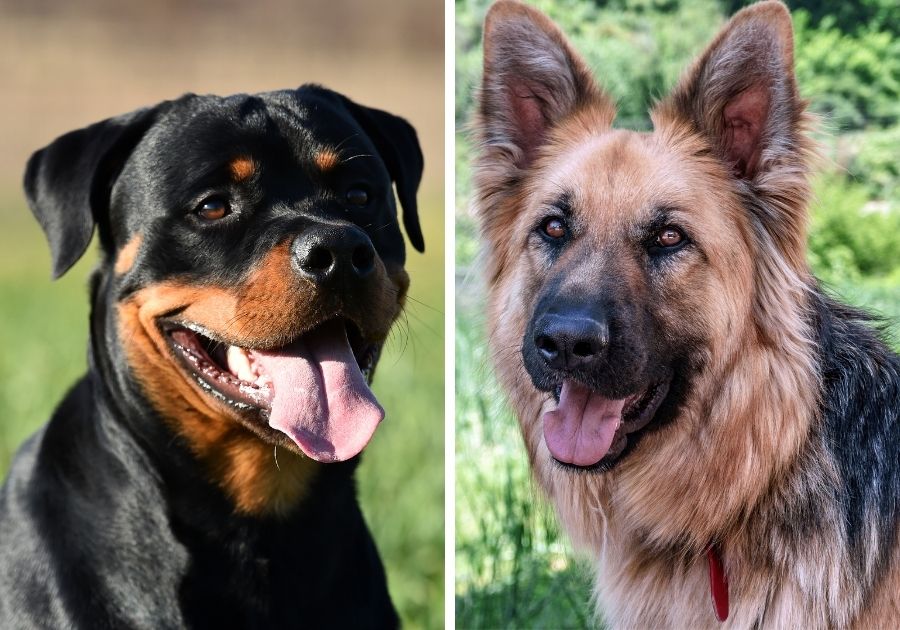
Size
Size is one of the first determining factors when someone is considering a breed. For a person who wants a huge guard dog, the Rottweiler is better.
It weighs more and is taller than the German Shepherd, thus looking more intimidating.
However, someone with a smaller living space might consider the German Shepherd a better option.
The Rottweiler can weigh up to 130 pounds, which is more than the 95 pounds max of the German Shepherd.
Some German Shepherd can get to 100 pounds, but even then, they fall 30 pounds shorter.
You can’t replace one breed with the other if the size is a major role for you.
Appearance
The common color of both the German Shepherd and the Rottweiler is black and tan—though the German Shepherd has more. That’s where the physical similarity ends.
Not only is the Rottweiler bigger than the German Shepherd, but it is also muscular and stockier.
Some people won’t consider the German Shepherd to be intimidating, but the same can’t be said for the broad-looking Rottie.
Because the GSD is slender, it is more athletic than the Rottweiler.
Energy
The German Shepherd is more energetic than the Rottweiler, but as they are both working dogs, they need a lot of exercises.
Leaving either breed without exercise can result in destructive behaviors.
The Rottie might look calm with an average energy level, but it may not be satisfied until it gets at least 30 minutes to an hour of exercise.
It depends on the energy level, however, as some Rotties have low energy and will cope with a 10 or 20 minutes walk.
The German Shepherd needs up to an hour of exercise, and even more.
A walk is just a warm-up for this breed, and it enjoys activities that get it pumping, like fetch and agility. Both breeds should be exercised mentally too.
Temperament
The German Shepherd and Rottweiler are both strong, loyal, and protective. However, they don’t behave the same.
The Rottweiler tends to be more playful with its family members than the German Shepherd, which shows its affection more quietly. The GSD plays, too, just not as silly as the Rottie.
Both tend to be aloof towards strangers but should not be shy, anxious, or fearful as those are behavioral problems.
They are also self-assured and may want to be in charge if you do not assert your leadership role.
People assume the Rottweiler is more aggressive, even enough to attack its owner. While this isn’t always true, it calls for caution on your part.
Do not get a Rottweiler pup from a questionable source, like a puppy mill or a backyard breeder.
An ill-bred Rottie will have personality issues that should best be avoided.
You also should have the experience to train one. The same applies to the GSD.
Trainability
Both breeds are trainable, but they are not suitable for first-timers.
While the Rottweiler is loyal and devoted to its family, it also has a dominant side and won’t hesitate to take over if you’re not firm enough.
Rottie owners need to be very experienced but not harsh while training. A wild Rottie is dangerous and can overcome its owner.
The German Shepherd is more willing to please and learns faster, but its independent spirit can also make it challenging to train.
With both breeds, you should start early and be consistent. As worker dogs, having a routine helps.
You can’t afford to be inconsistent and sloppy, lest you confuse your pet dog. Put a schedule in place, and try to train it at the same time every day.
Rottweilers love food a lot, so motivating them with treats can keep them interested in the training. Treats also help it learn faster.
The German Shepherd is more motivated by praise because of its eagerness to please and, overall, considered easier to train than the Rottweiler.
It also tends to learn faster, but that’s not a stringent rule as individual differences matter.
Health and Life Expectancy
Both breeds are healthy, but their lifespan differs. Because the Rottweiler is bigger, it has a shorter life expectancy compared to the German Shepherd.
It is expected to get up to 10 years, while the German Shepherd can live to 14 years.
Rottweilers and German Shepherd are prone to hip and elbow dysplasia, the latter even more.
It can be genetic and also caused by other conditions which can be avoided with the right diet. Proper breeding can as well reduce the chances of these dysplasias.
The Rottweiler is prone to cardiac issues like cardiomyopathy and subaortic stenosis, as well as eye diseases like Progressive Retinal Atrophy.
The German Shepherd suffers from degenerative myelopathy, bloating, and allergies.
Coat and Grooming
The German Shepherd and Rottweiler have similar grooming needs, except when the GSD has long hair.
In that situation, the coat requires more brushing. Both breeds shed, but it tends to be more obvious with the German Shepherd, especially the long-haired variant.
The shorter-haired German Shepherd and the Rottweiler should be brushed a few times each week. When shedding, it gets to daily.
They also have a similar bathing requirement, a minimum of one every 8 weeks.
The Rottweiler drools, and that’s a habit that should be put into consideration when choosing.
Other hygiene needs are just the same. Brush its teeth regularly, clip its nails and clean the ears.
Because of the Rottweiler’s droopy ears, it is more vulnerable to ear infections, but the German Shepherd isn’t exempt. Be observant while grooming for any signs of infection.
Feeding
Rottweilers eat a lot more than the German Shepherd, and as we mentioned above, they are lovers of food.
A Rottie adult needs around 4 to 5 cups a day, while the German Shepherd’s feeding requirement is 2.5 and 3.5 cups.
These are general recommendations, however, as other factors like size should be counted.
Both breeds need to be fed high-quality meals filled with protein, and the kibble should be suitable for large dogs.
Age matters, too, as puppies have different diet requirements. These dogs are workers, and feeding can be a good opportunity to challenge them mentally.
Rather than give them food, have them work for it. Both breeds will enjoy the challenge, especially when it is very interesting.
Origin and AKC Recognition
The Rottweiler and the German Shepherd are both from Germany, but the Rottie came into existence before the GSD.
However, the American Kennel Club recognized the German Shepherd before the Rottweiler and was classified under the Herding Group, while the Rottweiler came under the Working Group.
Currently, the German Shepherd is more popular than the Rottweiler.
Besides the period when the Rottweiler almost got extinct, another hindrance to the breed’s popularity is the stereotype of it as dangerous.
Reputation and Bite Force
The German Shepherd and the Rottweiler are both considered fiery, aggressive, and dangerous.
However, the German Shepherd has a better reputation compared to the Rottweiler.
According to statistics, the German Shepherd is more responsible for human bites than the Rottweiler, but people do judge by looks, and the Rottweiler looks scarier.
The Rottweiler has a stronger bite force than the German Shepherd, mainly because of its jaw strength.
Rottweiler’s bite force measures 328 PSI, while the German Shepherd’s bite force is 238 PSI.
Are They Good Family Dogs?
Regardless of stereotypes and stats, both breeds are good as family dogs.
Their loyalty, affection, and protective nature are traits many potential pet parents look out for in their dogs.
However, these dogs aren’t for everyone. New pet parents should not attempt owning either breed.
Someone who’s highly active would fare better with a German Shepherd, while the couch potato will fare better with a moderate Rottweiler.
Allergy sufferers can’t cope with either breed as they both shed, while apartment dwellers may find that the Rottweiler is too big for their living space.
The German Shepherd is often preferred for service, but both can be trained to work.
Are They Good with Kids and Other Pets?
The German Shepherd is good with kids, same as the Rottweiler.
It is easier when they grow up together with the kids, and if you adopt an adult German Shepherd or Rottweiler, you would need a professional trainer.
The Rottweiler is best suited for a house with older kids because of its size. It won’t purposely hurt a toddler, but it can accidentally knock the child over.
The German Shepherd might also be a problem for toddlers.
In any case, you should be observant when your kid has any interaction with a dog.
Playtime should be supervised, and also teach your children that some behaviors are unacceptable.
Are They Good Security Dogs?
With their loyalty and protectiveness, both breeds are good for security.
They make excellent watchdogs and guard dogs and can be trained to attack an intruder or stop on command.
Because of their territorial nature, both breeds should be trained and socialized to not be aggressive towards every stranger they meet.
Price
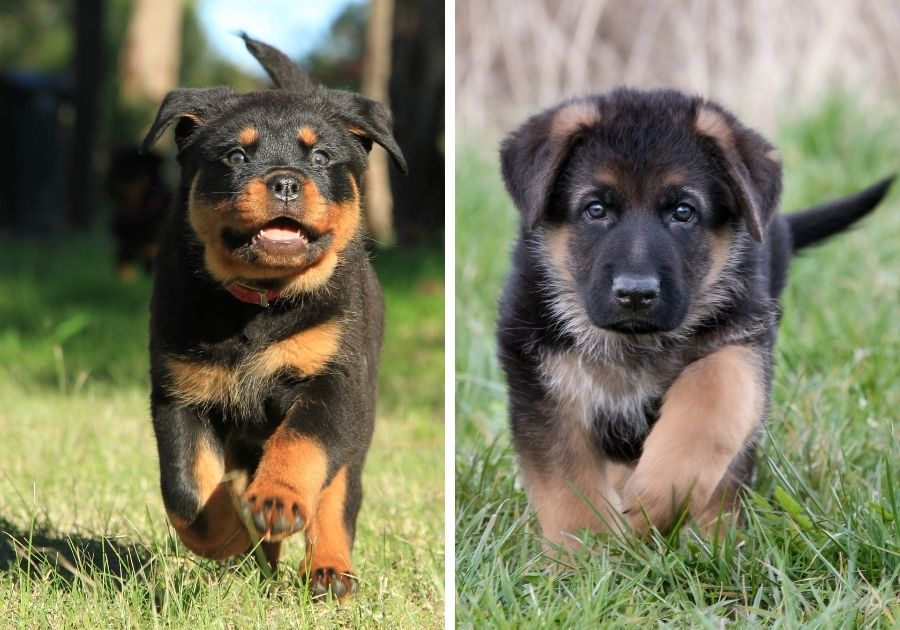
The Rottweiler’s initial cost tends to be more than the German Shepherd because the latter is more popular and, thus, easily accessible.
The Rottweiler’s price range falls between $1,500 and $2,500, while the German Shepherd ranges from $1,500 to $3,000.
Anyone from a winning bloodline will cost more. For adoption, both average at $300.
The Rottie also costs more to take care of, from feeding to health concerns.
That said, because the German Shepherd is expected to live more, the difference isn’t much.
Can a Rottweiler beat a German Shepherd?
If a Rottweiler and a German Shepherd were to get into a fight, the Rottweiler has a better advantage because of its size and stockier frame. The German Shepherd won’t back down, though.
Is a Rottweiler more aggressive than a German Shepherd?
Both the Rottweiler and German Shepherd are considered by a lot of people as aggressive, with the Rottweiler at a higher level.
However, aggression is an undesirable behavior in both breeds.
Is a German Shepherd faster than a Rottweiler?
Because the German Shepherd is longer and slimmer than the Rottweiler, it tends to be more athletic and has more speed.
Rottweiler vs German Shepherd – Which is Best for You?
The Rottweiler and the German Shepherd are capable of being both guard dogs and family companions, especially in the hands of the right person.
By considering their size, temperament, lifespan, energy, price, and grooming needs, you will know which breed to opt for.
Do keep in mind that no one is better than the other.
You May Also Like:
Doberman vs German Shepherd: 12 Differences & Facts

